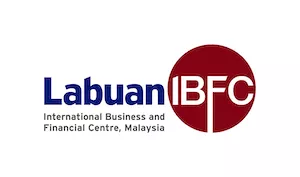The establishment of a captive insurance entity or any form of self-insurance requires some maturity and sophistication in terms of the company's financial and risk management. And Asia is by no means impoverished in these areas.
However, some would still go so far as to say that the region is not ready for a more robust self-insurance or even captive insurance presence, but how true is this?
Being a niche area, not many understand or fully appreciate its benefits. Notwithstanding, am happy to note that the trend certainly suggests that the momentum is building, with captive insurance fast gaining popularity among the large corporations while SMEs are starting to appreciate it.
Throughout the enriching one-and-a-half-day Asian Captive Conference 2017 (ACC 2017), I was quite pleased to see the turnout of risk managers from the region, undoubtedly a sign of their thirst and enthusiasm for a deeper dive into the intricacies of captive insurance business. Personally, when there was hardly any attrition on the second day is when I realised, the depth of this interest.
In his keynote address, Bank Negara Malaysia's Governor Tan Sri Muhammad Ibrahim noted that the Southeast Asian region had most of the necessary features already in place, especially for a thriving captive insurance industry.
"This region is especially well-placed to harness this potential [for captives], given the vibrancy of SMEs and the fast growing takaful market.
"Southeast Asia alone contributes almost 30% to global takaful contributions, and this offers an opportunity as Malaysia has long sought to develop a facilitative regulatory environment to drive an innovative, competitive and sustainable growth of Islamic finance," he said.
Governor added that the captive industry, if engineered correctly, could play a vital role in promoting financial stability and contribute to the enhancement of macroprudential measures in the region.
However, he cautioned that it was important that captives be seen as supportive of growth rather than as a vehicle that erodes the tax base, which necessitates the development of a regulatory structure to supervise the industry.
The development of a facilitative and business-friendly yet internationally robust set of regulatory provisions is essential towards the growth of the industry.
This juggling act comes down to a balance of interest whilst keeping the best interest of the jurisdiction at heart. This feat is one I believe Labuan IBFC has managed to accomplish; after all we are home to more than 200 licensed entities from the risk management industry alone!
Moving Forward
As we all know, the only constant in life in change.
So Labuan IBFC will not rest on its laurels, and as such change is inevitable. These changes aimed at bolstering the risk management offerings in Labuan IBFC will not be an overnight exercise but I can assure you it is something that we are actively working on.
Setting-up a captive insurance business is not a simple task. Some have said it is akin to raising a child, and if indeed that is true, as a parent, I can promise you that no one day is ever the same. And as you all know it takes a village to raise a child! So similarly, curating a risk management industry requires time and effort as well as an active role from all stakeholders.
Forming a captive requires effort and buy-in from all levels of management and the Board in order to reap the benefits of a captive. Needless to say the process of making the captive works for your organisation will be a dynamic affair with many moving parts towards its evolution and growth.
So as the risk management industry in Asia matures, we at Labuan IBFC will be on hand to play an active role in ensuring the needs of the industry are met, whilst we remain committed to a robust approach towards regulation.
In the meantime, keep an eye out for these changes!
The content of this article is intended to provide a general guide to the subject matter. Specialist advice should be sought about your specific circumstances.

